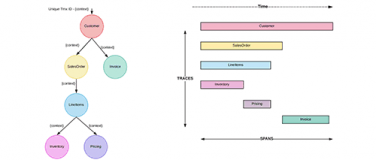You know how pervasive digital disruption is. But in case you needed another reminder, 52 percent of the companies in the 2000 Fortune 500 have either gone bankrupt, been acquired, ceased to exist, or dropped out. The way you survive in this environment is to be fast, agile, robust, and do it all at scale.
At CONNECT last week, Katharina Probst, Engineering Manager – API at Netflix, and Uri Sarid, our CTO, did a presentation about microservices. Netflix has been using a microservices architecture since 2009 — even before they were called microservices — and it is their way of thriving in an era of digital disruption. Katharina and Uri made the point that the most successful businesses now, e.g. McDonalds, Under Armour, Amazon, Tesla, and yes, Netflix, are not only competing on the goods and services they sell, but also on their ability to be digital platforms, providing innovative ways of getting those goods, services, and experiences to customers at scale and in real-time.
They are able to do this by creating small services that compose themselves into processes, that evolve independently, can be built as quickly as they are needed, and are optimized for change and reuse. This is our vision of an application network, and is also how a microservices architecture is created.
To implement this microservices architecture properly in any organization, there are two crucial ingredients. You must have both — one doesn’t work without the other. You have to have a strong API strategy, and you must also have a strong DevOps strategy.
The API strategy exists to help you define the microservice boundaries. It also helps you define the purpose and commitment of your APIs, helps you define and manage your dependencies, and standardizes the API lifecycle to optimize design, management, discoverability, and deployment. APIs are the glue that holds your microservice architecture together.
But the DevOps strategy provides a great blueprint for your architecture. That will help you standardize your containers and meta-services, can create an automated promotion, testing, provisioning, deployment, and security cycle, and helps you design your architecture for optimum resilience and operability.
If you’d like to know more about how Netflix implements its microservices architecture, take a look at the presentation below.
For more resources about microservices and how they can help your business, take a look at our whitepaper on microservices best practices and design.









